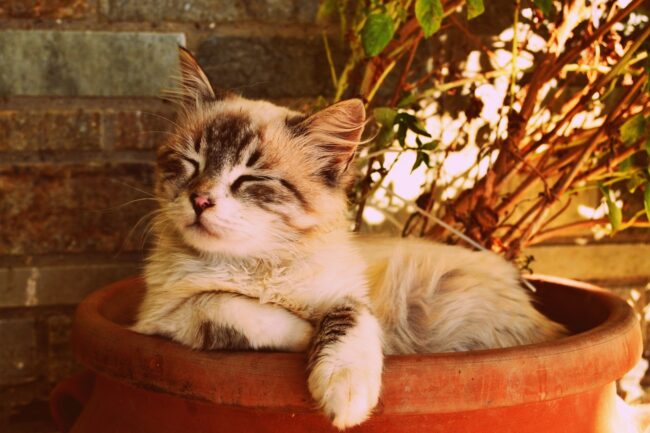Table of Contents
Resorptive lesions or tooth resorption is a common medical condition that affects 20 to 60 percent of cats and three out of four over the age of five years. Though the cause of this condition is unknown, there are treatment options available to save your pet from unnecessary pain and discomfort.
In this guide, we take a closer look at resorptive lesions in cats and try to learn more about the condition’s symptoms and treatment.
What Are Resorptive Lesions?
Resorptive lesions is a dental problem that affects cats. Unfortunately, the painful tooth condition often goes unnoticed until it turns into a serious issue.
The best way to avoid this problem is self-education and this article provides you with everything you need to know. Let’s start with the basics.
Each tooth contains tissue surrounded by a substance called dentin that forms much of the tooth structure. When dentin starts to erode, it’s on its way to becoming completely destroyed. As the condition progresses, all the areas of the affected tooth become involved.
The erosion generally starts in the tooth enamel along the gum line and proceeds towards the center. The tooth eventually falls out, leaving behind a raised bump on the gum. Tooth resorption sometimes causes a hole in the tooth that resembles a cavity. However, unlike most cavities, they are caused by bodily processes and not bacteria.
Is it Safe Not To Treat The Cat?
Since it’s difficult to notice the early signs of tooth resorption in cats, the condition often goes untreated for a long time. It affects the crown of the tooth and exposes the nerve and dentin, resulting in pain and inflammation. If cat tooth resorption is left untreated for a long period of time, the crown can break and cause tooth loss.
Feline tooth resorption lesions are one of the top causes of tooth loss in cats. If left untreated, this disease can result in other oral problems, pain, infections, and problems in other parts of the body.
The first stage of this condition shows a defect in the enamel of a tooth while the second stage damages the enamel and dentin. The later stages involve affecting the crown or even roots of the tooth, ultimately destroying the entire tooth.
This condition can be highly painful to cats. It can show signs like reduced appetite, difficulty chewing, bad breath, inflammation of gums, drooling, vomiting, and oral bleeding.
Early detection is really important when it comes to treating tooth resorption. Taking the cat for a regular oral checkup can help you detect and treat it on time to prevent further implications. If left untreated, this disease can become threatening. It is not safe to ignore any symptoms of resorptive lesions in cats and it should be reported to the vet at the earliest convenience.
Resorptive Lesions Symptoms
Resorptive lesions are a highly painful condition but cats are likely to hide pain (as is their natural instinct). So your feline friend might not cry until it is very ill. This is why cat owners should keep a watch on the cat’s behavior and look for early signs and symptoms of resorptive lesions.
Difficulty Eating
To find out whether the cat is suffering from resorptive lesions, pay attention to your pet when it eats. Cats with legions might chew slowly, drop food from their mouth or turn their head to the side. As the cat begins to eat less due to the pain, it also shows weight loss.
Behavioral Changes
If you note any sudden change in the cat’s behavior, it can indicate pain. Your feline may no longer behave in a friendly manner and refuse to sleep with you. It may also stop playing with its favorite toy and other activities that it used to enjoy. If your cat shows any strange behavior, you should take it to the vet for a regular checkup.
Bleeding and Oral Problems
If you can manage to look inside your cat’s mouth, a clear sign of this condition is blood along the gum line. You might also notice small holes or dark stains on affected teeth. The cat might also show increased salivation, difficulty eating, and other dental issues.
Treatment Cost
If the tooth resorption is diagnosed in the early stages, it may not require treatment. However, it is better to extract the tooth as a preventative measure rather than trying to fix the issue after it gets too severe.
Tooth extraction is the only available treatment method to combat the painful symptoms arising from tooth resorption. The cost of the extraction depends on the affected tooth and the extent to which it is affected. For example, teeth are harder to extract than molars, premolars, and incisors and cost more to get removed.
If tooth resorption in your cat requires extraction, you can expect to spend $300 to $500 per tooth in addition to x-rays and anesthesia. The latter can add between $300 and $400 to your bill. If the root is reabsorbed, crown reduction treatment is recommended and the cost would be lower. You will also have to spend money on pain-relieving medicines. Most felines have multiple affected teeth and the treatment cost can run into the thousands.

